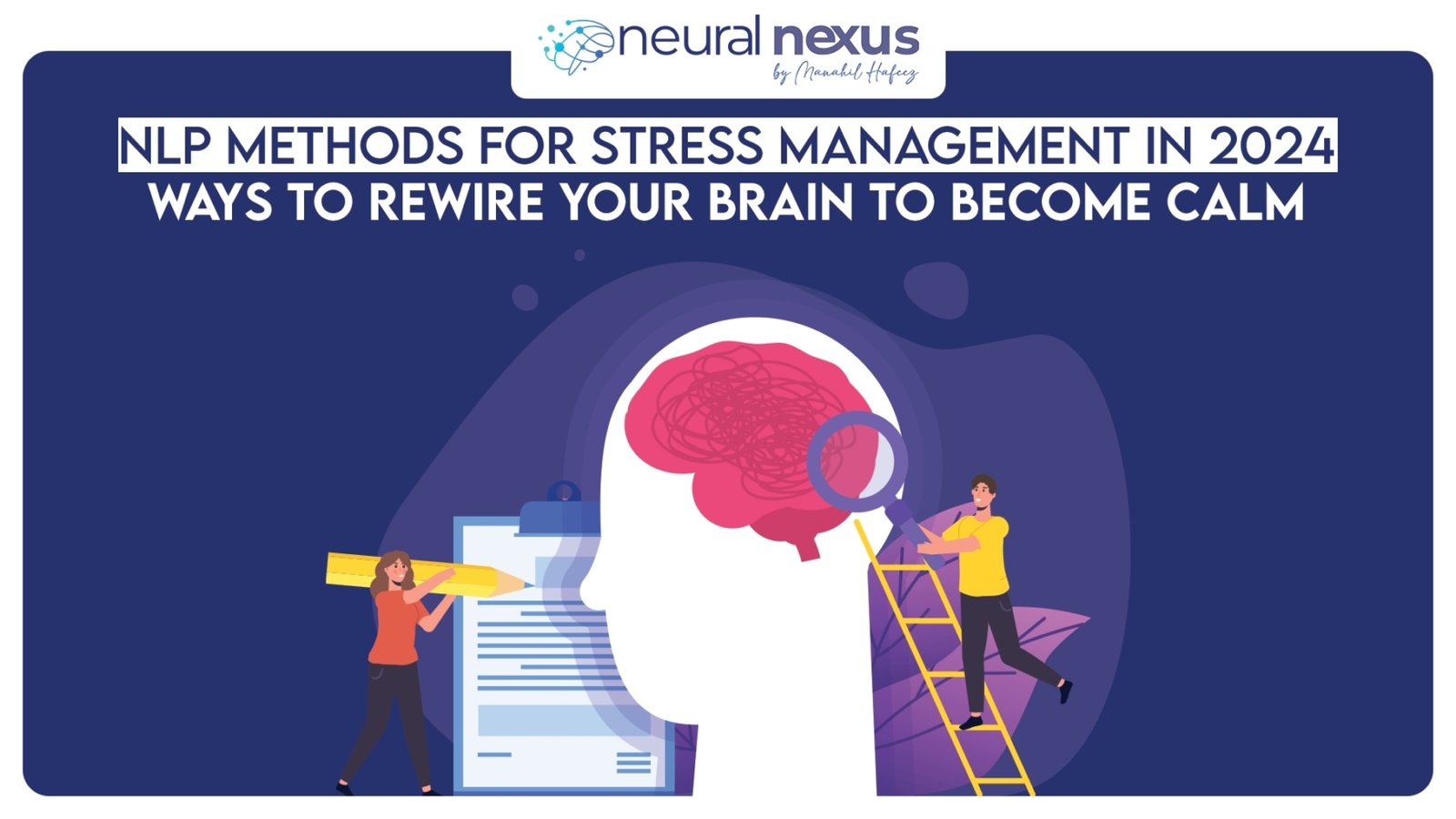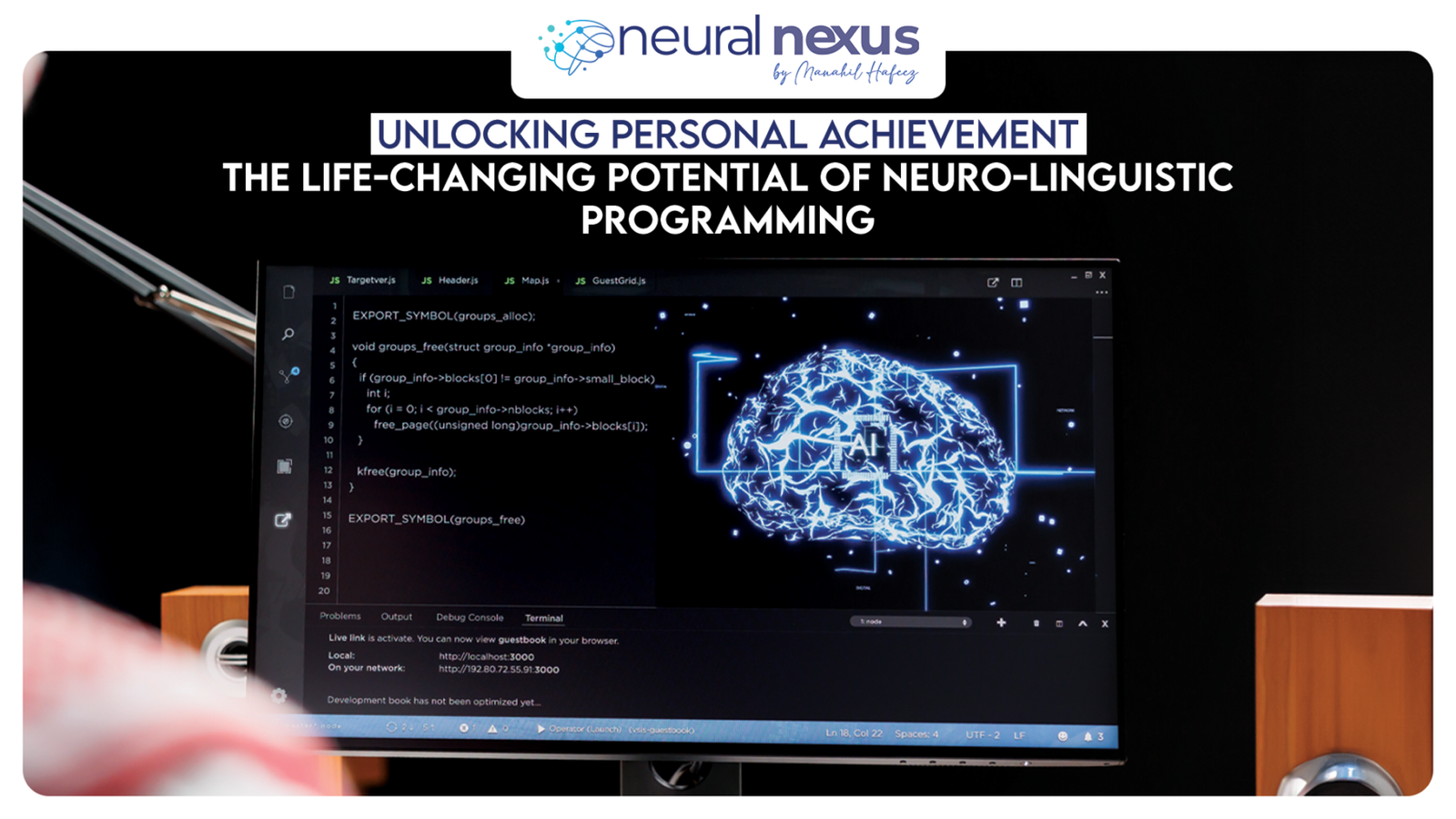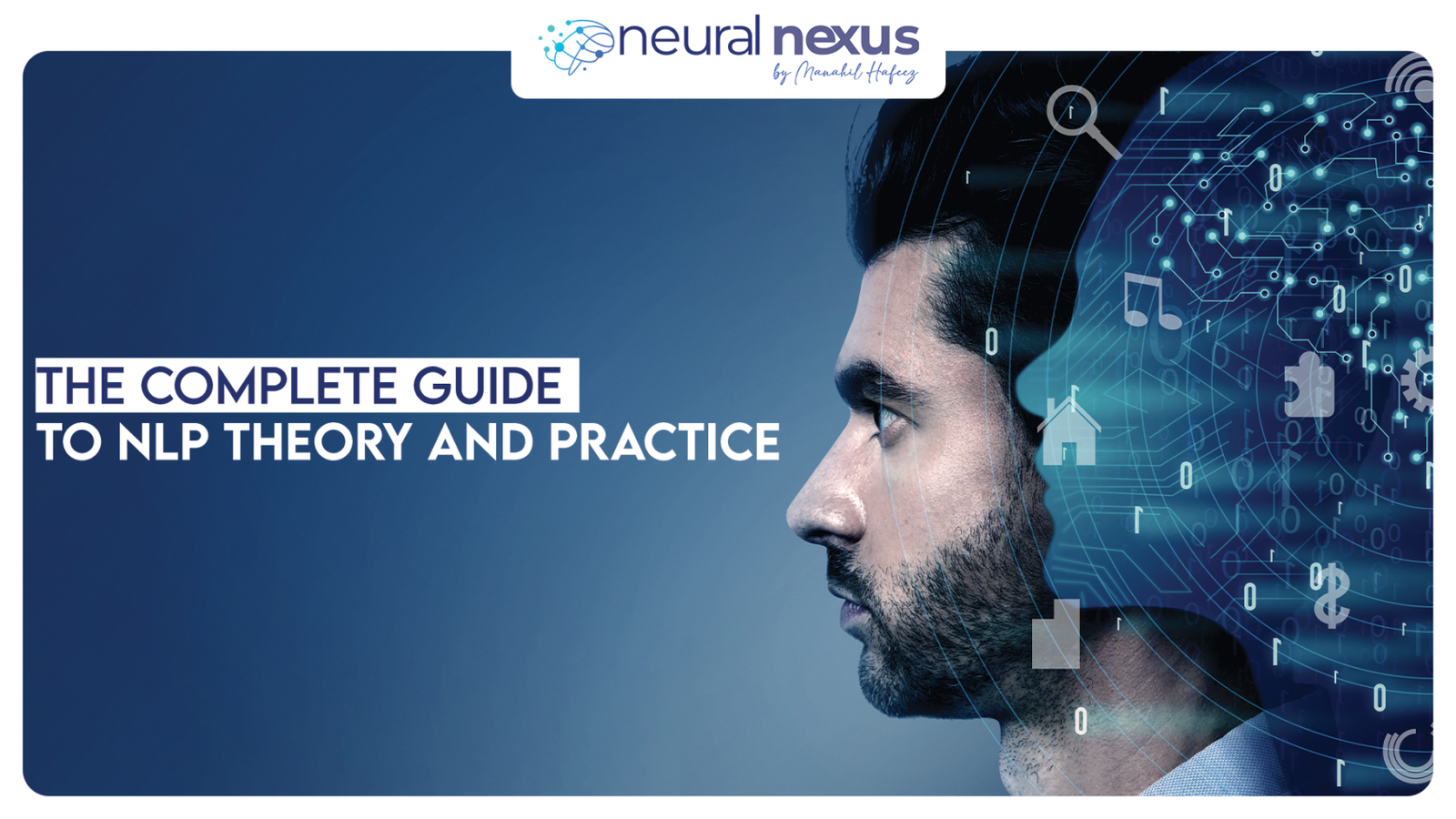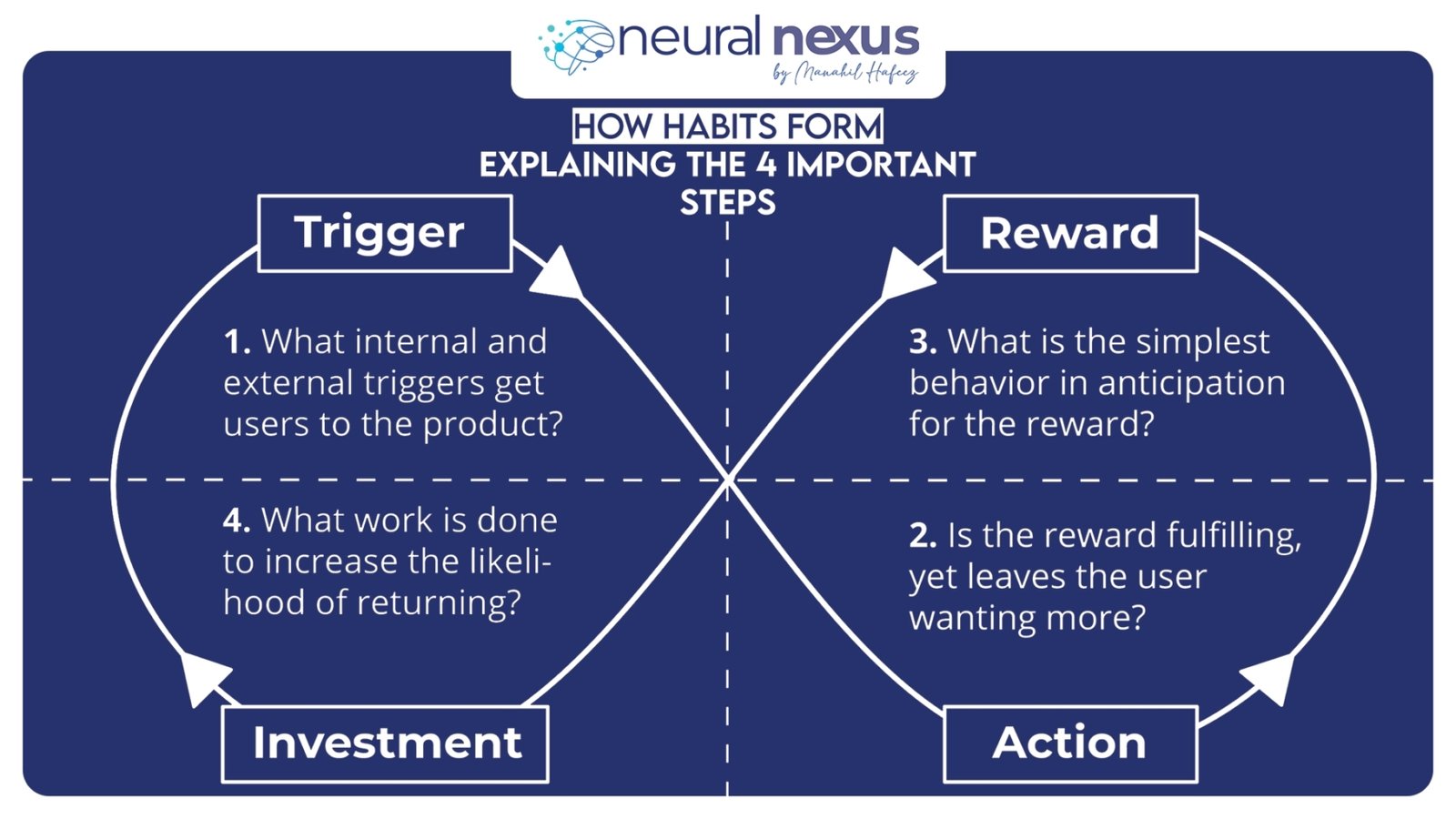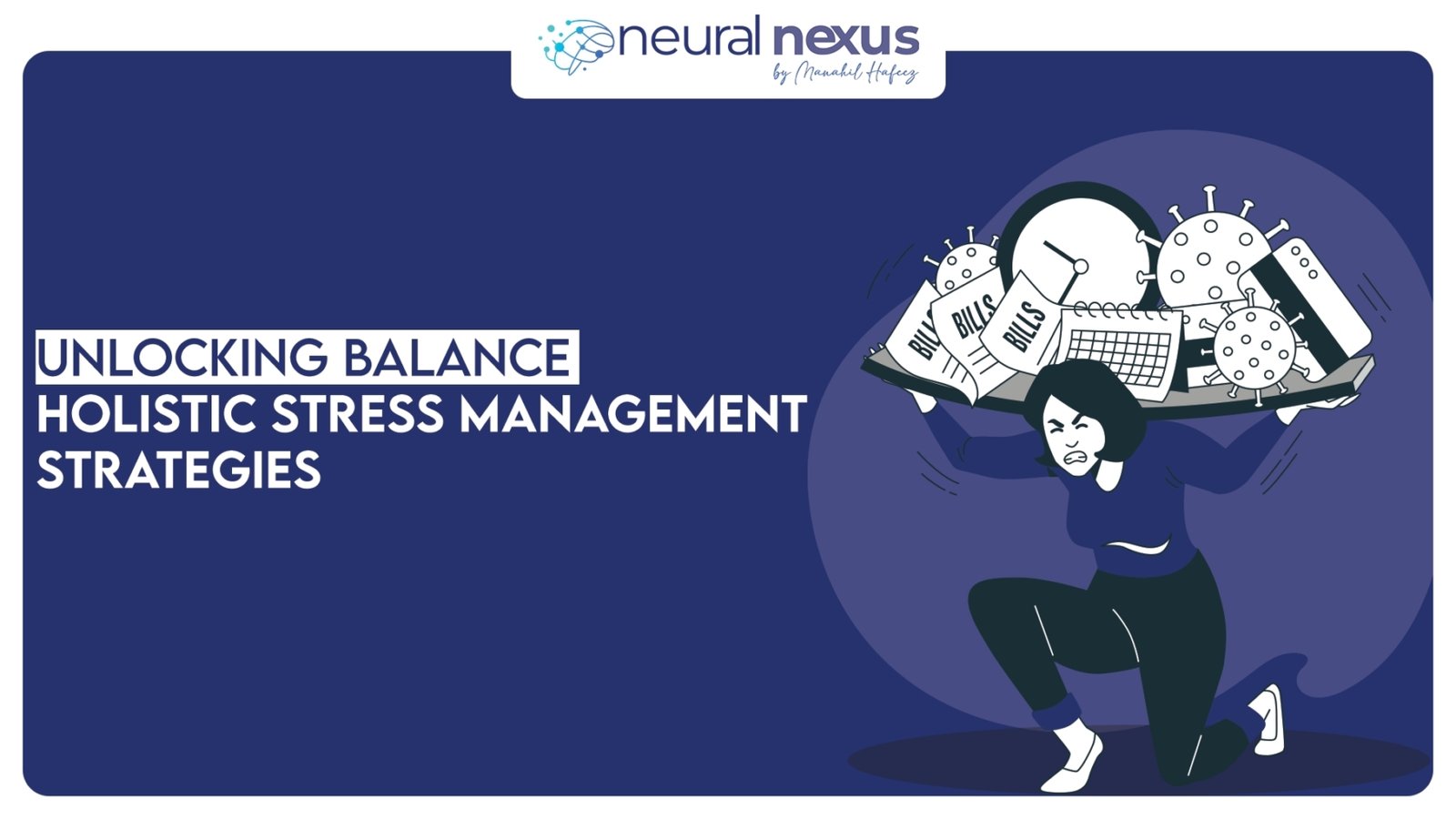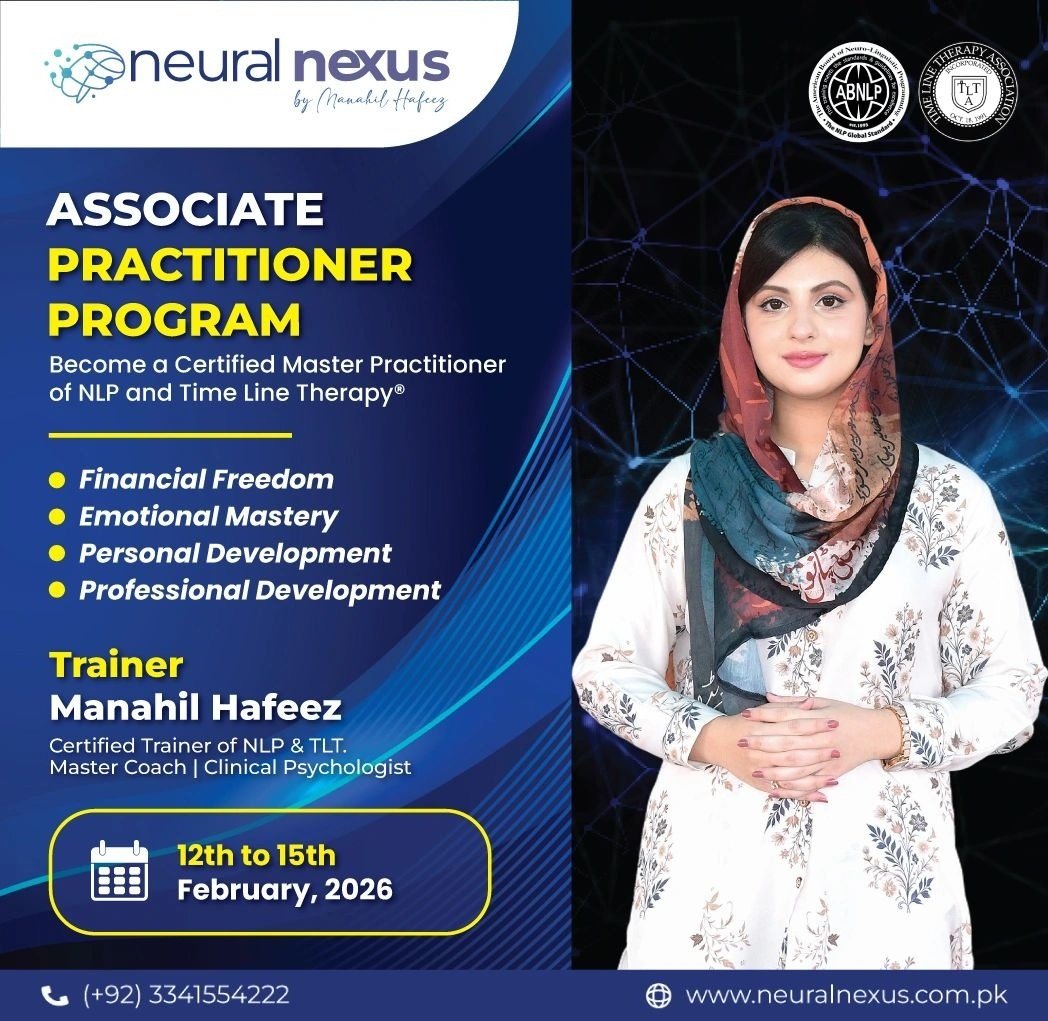In a world that constantly challenges our mental resilience and emotional stability, Neuro-Linguistic Programming (NLP) has emerged as a powerful tool for personal transformation. At Neural Nexus — widely recognized as the best NLP training institute in the region — we’ve had the privilege of guiding countless individuals on their journey toward clarity, confidence, and purpose.
Today, we’re sharing a few real-life stories that highlight just how impactful NLP can be.
Note: Names have been changed to maintain the privacy and confidentiality of our clients, but the experiences shared are based on true transformations.
From Social Anxiety to Public Speaking Pro
Zaina, a young marketing professional, once struggled with paralyzing anxiety in social and professional situations. After attending a workshop with our best NLP trainer, she began applying anchoring techniques and reframing exercises. Within months, Zaina not only overcame her fear but also became a confident speaker—earning accolades during corporate presentations.
Breaking Free from Limiting Beliefs
Zoha, an entrepreneur, had been stuck in a cycle of self-sabotage and fear of failure. Through Time Line Therapy® sessions and NLP belief change techniques, she identified emotional patterns linked to childhood experiences.
Working with a certified expert at Neural Nexus—the best NLP training institute in Pakistan—she eliminated deep-rooted negative emotions and created a new, empowering narrative for herself. Today, she runs two successful businesses.
Healing from Past Trauma
Sumbal came to Neural Nexus after years of struggling with unresolved trauma. Traditional therapy hadn’t provided the breakthroughs she needed. Using Time Line Therapy®, our best NLP trainer helped her release anger, sadness, and fear tied to past events—permanently.
This emotional freedom enabled Sumbal to rebuild her relationships, regain self-worth, and begin a fulfilling career in wellness coaching.
Career Transformation Through Mental Rewiring
Maryam, a software engineer, lacked confidence in leadership roles. After completing our intensive NLP certification program, she learned how to model excellence and communicate more persuasively. Today, she leads a high-performing team and credits Neural Nexus as a turning point in her career.
What Our Participants Say
- Rahat Salman: The 4-day Neural Linguistics program was a truly transformative experience. It delved deep into the fascinating intersection of language, neuroscience, and human behavior.
The instructor was highly knowledgeable and passionate, creating a dynamic learning environment. I particularly appreciate the practical exercises and real-world applications, which allowed me to immediately apply what I learned.
I learned valuable techniques for building rapport, understanding nonverbal cues, and crafting persuasive messages. I’m confident that these skills will serve me well in both my personal and professional life.
Overall, I highly recommend the Neural Linguistics program to anyone seeking to deepen their understanding of human communication and enhance their ability to connect with others. It’s an investment in yourself that will pay dividends for years to come. - Huma Anwar: I recently completed 20 hours of NLP training from Neural Nexus by Manahil Hafeez and found it to be a highly enriching experience.
The training was well-structured and easy to follow, with interactive exercises and real-world examples that helped reinforce my understanding of the concepts. The trainer was knowledgeable and supportive, providing clear explanations and feedback throughout the training.
I would highly recommend it to anyone looking to gain solid understanding of NLP.
- Mehr Qayyum: My decision to do this training was quite sudden… but I have truly enjoyed this very amazing journey.
The learning I have made will go a long way with me… helping and supporting not only me but also people associated with me, be it family, friends, or my students…
I feel a very positive change. Thank you so much for this wonderful experience 👏👏👍🏻👍🏻 I wish and pray that you keep spreading positivity around, and may you flourish in every possible way. Ameeen - Sultan Maqsood: Indeed it was wonderful and extremely rewarding experience to work with Neural Nexus Pakistan. I extend my sincere gratitude to the worthy trainer, CEO and team for managing the training in a most befitting manner. Remain always blessed 💕
- Zoha Fayyaz: This NLP course of Associate Practitioner Program is well-structured and easy to follow, making complex topics more understandable.The explanations are clear, and the hands-on exercises make the learning experience engaging. Thanks to Manahil, the trainer, for making concepts easy to grasp.
- Ghazala Arif: Neural Nexus Training with Manahil Hafeez is an excellent platform for personal and professional development. It provides the opportunity to grasp the NLP concepts and revise them as a higher framework. Highly recommended!
- Minal Baig: It’s pleasure to find NEURAL Nexus Pakistan for NLP training. It’s a wonderful experience with Manahil Hafeez.
- Language Pills Academy: My experience with the trainer and fellow participants was truly memorable. The trainer’s approach was not just about teaching; it was about fostering real understanding and growth. What made it even better was the sense of community we developed as a group. We encouraged each other, shared our challenges, and celebrated our progress together. This experience was more than just a learning opportunity—it was a journey of growth and connection that I’ll always value. 💫💫💫
- Maryam Kiyani: It was a wonderful experience gaining and learning new knowledge out of the box. I must say that team is very cooperative and active throughout the course. They are trained and groomed. And if we talk about the trainer so I have no words to praise her that how much she is commendable 💕♥️ She is doing so great so well that no one can deny. May Allah bless you more Manahil. You deserve much more. The way you teach, train and guide each and minor details literally I must say girl I am so so proud of you 💕💯 best wishes
- Ayesha Fatima: I recently completed my Associate Level training in Neuro-Linguistic Programming (NLP) at Neural Nexus, and it has truly been a life-changing experience. This journey has empowered me in ways I never thought possible, providing me with tools and techniques that have profoundly transformed my personal and professional life. The training was delivered by Manahil Hafeez an exceptional trainer, whose expertise and passion for NLP were evident in every session. She created an engaging, supportive, and inspiring learning environment, making complex concepts accessible and applicable. Her deep understanding of NLP, combined with her ability to connect with each participant, ensured that we all received personalized guidance and support.
- Creative world: Manahil is an exceptional mentor with a uniquely gentle and heartfelt approach. She not only expertly guides us in grasping new concepts, but also empowers us to discover our own potential and depths. Her impact is profound, and I wholeheartedly recommend her services to anyone seeking growth and self-awareness. I recommend her as a best best NLP coach.
- Fatima Qureshi: I have just completed 1st module of NLP today. It was an amazing experience. I was expecting many technical issues but there weren’t any. The way of teaching of minahil was very good. The content in all 4 days of training was very informative and interesting. This training has given me a lot of self-awareness. I have also learnt interventions which will gonna help me on personal as well as professional level inshaAllah. Overall it was an amazing experience.
- Zaina Liaqat: What an empowering journey! Attending the Associate Practitioner program was just what I needed to learn all about the way our mind works and successful client interventions. The entire team of Neural Nexus is extremely professional and well-organized! Looking forward to attending more sessions!
- Yasir Khattak: If you want to get certified from the American board of NLP, this is the place. This institute is certified from the American Board of NLP. The trainer Manahil Hafeez is among the only 7 NLP trainers and 6-time line therapy trainer in Pakistan. If you want to do NLP, then I would highly recommend this authentic institute. Their team is extremely cooperative and the trainer is remarkable.
- Shazia Aziz Khan: NLP Associate July 2024 training was excellent in regard to preparedness of the trainer Manahil and her team was vigilant to make small hiccups on participants side catered too. Though I was apprehensive about online teaching and it’s outcome but Minahal dealt with that expertly. I am happy and confident about next trainings will be excellent and beneficent too. Thank u Neural Nexus.
- Mahnoor Hafeez: Such an amazing trainer. The way she explains every concept and gives complete time and attention to each and every student is extremely commendable❤️ The entire team at Neural Nexus is very responsive and responsible. Looking forward to doing more certifications with them.
- Shaheen Akhtar: Manahil hafeez is an exceptional NLP trainer and time line therapist. She certifies you with American board sealed certificates.Her expertise in her field is beyond excellence. An excellent team with an amazing trainer and coach. Highly recommended.
- Kinzah Khan: This was my first experience with the NLP team and Manahil hafeez. These four days were very energy boosting and I learned a lot in these four days, self love and empowerment, self talk therapies, rapport and many more.It was a memorable training with all the others who were with me. NLP taught us how to work on ourselves first. I hope the next batch will be even more interesting. A special thanks to our CEO daniyal bin Riaz. Jazak Allah khair for everything.
- Sumbal Raza Hashmi: A great place to get your NLP done. I would like everyone to attend this training program at least once as it is a favor one can give to themselves. I will forever choose neural nexus by Minahil to be my coach in my NLP journey ahead
- Talal Iqbal: I am going to acquire all my certifications related to NLP from this very institute. After thorough research and observation, I have come to the opinion that this is the best institute in Pakistan, if you want to do NLP. The trainer is exceptional too.
- Alunia Syed: The trainer was very insightful, energetic and consciously aware of how to get the content across to the students.
The content was distributed very smartly, and delivered in a way that was convenient to grasp. Overall, it was a very knowledgeable experience and I would totally recommend it. - Fatima Rizvi: It was a good experience to learn things from a different perspective. Hoping to put the learnings in practice and gain personal and professional growth IA.
- Anu Am: It was a wonderful experience of attending training sessions conducted by Ms. Manahil. Best for personal grooming
- Hashu Khattak: One of the best and authentic places to get certified in NLP from the American Board of NLP. I recommend it to everybody. Undoubtedly Manahil Hafeez is best in her field.
- Farhana Najum: That was amazing experience the coach manahil was so helpful and session was very informative
- Jaweria Aziz: Minahil you are amazing …! And your team is very supportive too!
- Muqaddas Ahmed: It’s help me to overcome my own limiting belief and having an amazing experience.
- Dr Shoaib Kiani: A very nice and rewarding experience to learn NLP. Its interesting and hope will go a long way in this field
- Riaz Rehman: I recommend this to anybody aiming to do NLP. The best Institute and trainer. Masha Allah.
- Muhkam Wali: It was a good training overall.
Why Neural Nexus is the Best NLP Training Institute
Our results speak for themselves. Neural Nexus has helped hundreds of individuals unlock their full potential through:
- Certified NLP & Time Line Therapy® Programs
- Personalized coaching sessions
- Transformational workshops
- Expert guidance from the best NLP trainers in the industry
Whether you’re looking to overcome personal blocks, improve your relationships, or step into leadership, we’re here to guide you with scientifically backed methods and genuine care.
Ready for Your Own Breakthrough?
Your success story could be next. Join Neural Nexus — the best NLP training institute in Pakistan — and learn directly from the best NLP trainer dedicated to your growth.
🌐 Visit neuralnexus.com.pk to explore our upcoming trainings and book your free consultation.



